2022 Polestar 2 Long Range Dual Motor review
The Polestar 2 is the first car from EV newcomer Polestar. Effectively an electric car offshoot of Volvo, Polestar is owned by Volvo and its parent company Geely and the brand is looking to list on the stockmarket.
Polestar considers itself only the second global EV pureplay behind Tesla, arguing other EV startups are limited to specific regions.
While Polestar’s head office is in Sweden the Polestar 2 is manufactured in China.
READ MORE: New Polestar models by 2024: EV startup confirms 3, 4, 5 with 600km+ ranges
READ MORE: Polestar to differentiate from Volvo with its own electrfic motors in future
It lines up against the Tesla Model 3 from a price perspective and Polestar sees it tempting people out of ICE cars.

Underneath the unique skin and distinctive design is plenty of EV components from the Volvo XC40 Pure Electric.
Value
Entry to the Polestar 2 range starts at $59,900 plus on-road costs for the Single Motor or you can get the same car with the Long Range battery for $64,900.
For this test we’ve sampled the Dual Motor, which comes only with the larger battery and is priced from $69,900.
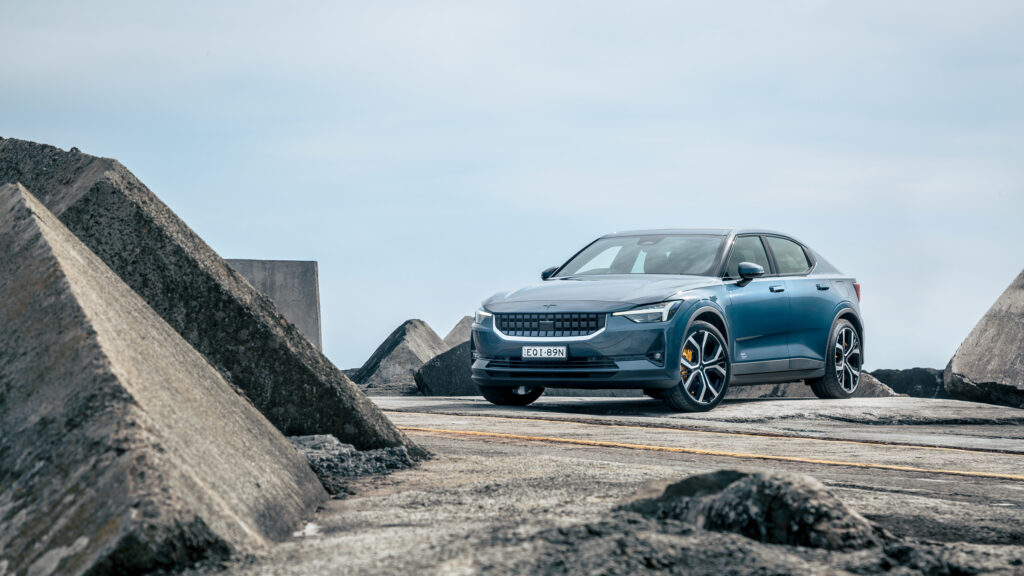
Like all 2s, it comes with 19-inch wheels, smart key entry, powered tailgate and heated and partially electrically-adjustable front seats. Safety systems include auto emergency braking (AEB) and speed sign recognition (which can link in with the cruise control).
READ MORE: Polestar 2 pricing confirmed: EV newcomer to take the EV fight to Tesla Model 3
SPECS COMPARISON: Hyundai Ioniq 5 v Tesla Model 3 v Kia EV6 v Polestar 2 v Volvo XC40 EV
There’s also a 12.3-inch digital instrument cluster and an 11.15-inch central touchscreen arranged in a portrait configuration.
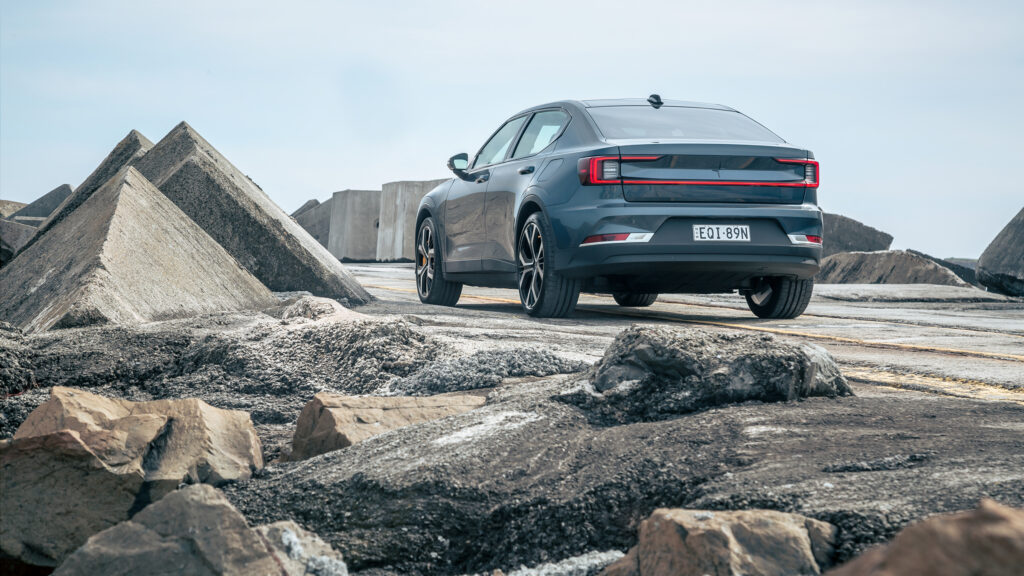
That screen has Google’s Android Automotive operating system doing the gruntwork. It means access to third-party apps, although the options are currently limited (more should theoretically be developed).
While Android Auto (the smartphone connectivity system) and Apple CarPlay (soon to be added as part of a software update) an be used, the native phone integration works nicely as it is.
Or, at least, it should. As we found in the XC40 Pure Electric, we had issues with the data connection. It seems Google has more work to do to ensure reliability and usability of the system. But the bones are there.
Ours also had the three major option packs that together add $19,000 to the price.
The $5000 Pilot Pack adds a heat pump, which can extend battery range by utilising existing heat in the electrical system to heat the cabin. It’ll have a bigger impact in cooler climates or winter. There’s also adaptive cruise control, steering assistance as part of Pilot Assist, front and rear parking sensors, blind spot warning, rear cross traffic alert with auto braking, rear collision warning and 360-degree camera. Plus there are pixel LED headlights that allow the car to be drive constantly with high beam lights activated; the car automatically blanks out other road users so they don’t get glare.
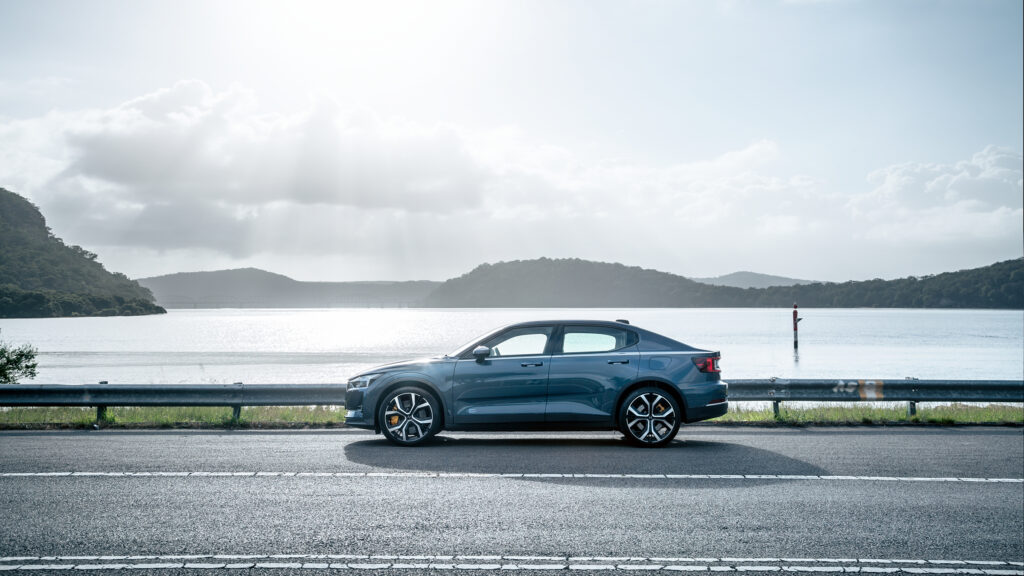
The $6000 Plus Pack includes a panoramic sunroof, a terrific 13-speaker Harman Kardon sound system, fully electric front seats with memory function, heated rear seats, heated steering wheel and heated wiper nozzles. There’s also an interesting WeaveTech vegan upholstery on the seats and Black Ash trim panels on the dash and centre console.
Polestar covers its cars with a five-year unlimited kilometre warranty and the first five years and 100,000km of servicing is included in the price.
Repairs and maintenance can be carried out at Volvo service centres.
And the Polestar 2 promises to get better with age courtesy of over-the-air software updates.
Inside
Like the XC40 Pure Electric with which it shares plenty beneath the skin, the Polestar 2 utilises the architecture of an internal combustion engine (ICE) car underneath. There’s the occasional compromise as a result. The floor has a sizeable hump on it in the rear, for example, which makes foot room tight for those in the middle back seat.
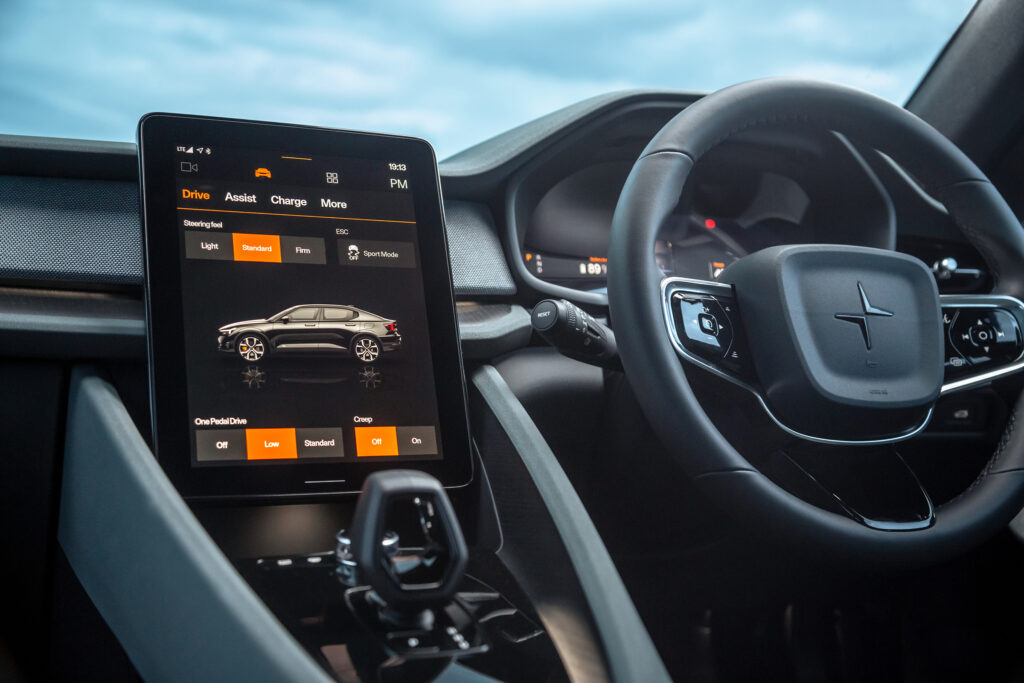
While it’s a five-seater, the Polestar 2 works better with four on board, and even then the back seat is not as well suited to those over 185cm tall.
No qualms up front where the driver is cocooned in nicely supportive seats and with a tall centre console dividing the front occupants.
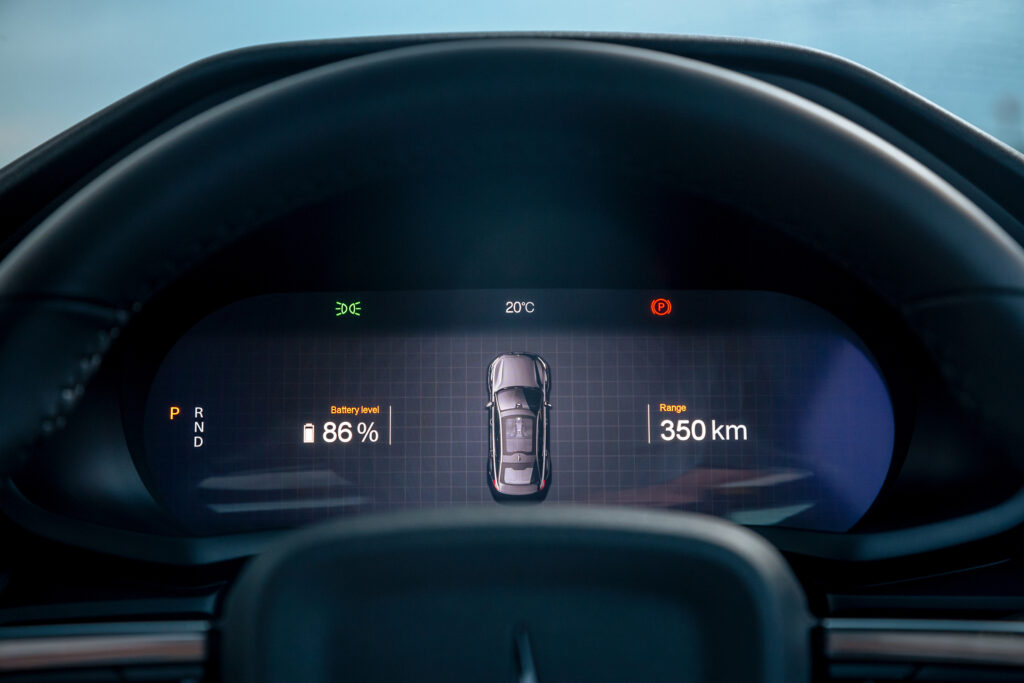
In every corner are high quality finishes with occasionally interesting patterns and textures. The way everything fits together is indicative of the quality and attention to detail.
Ours had the WeaveTech seat trim, which perfectly suits the design-meets-tech ethos throughout. The matte wood finishes are a good complement, too.
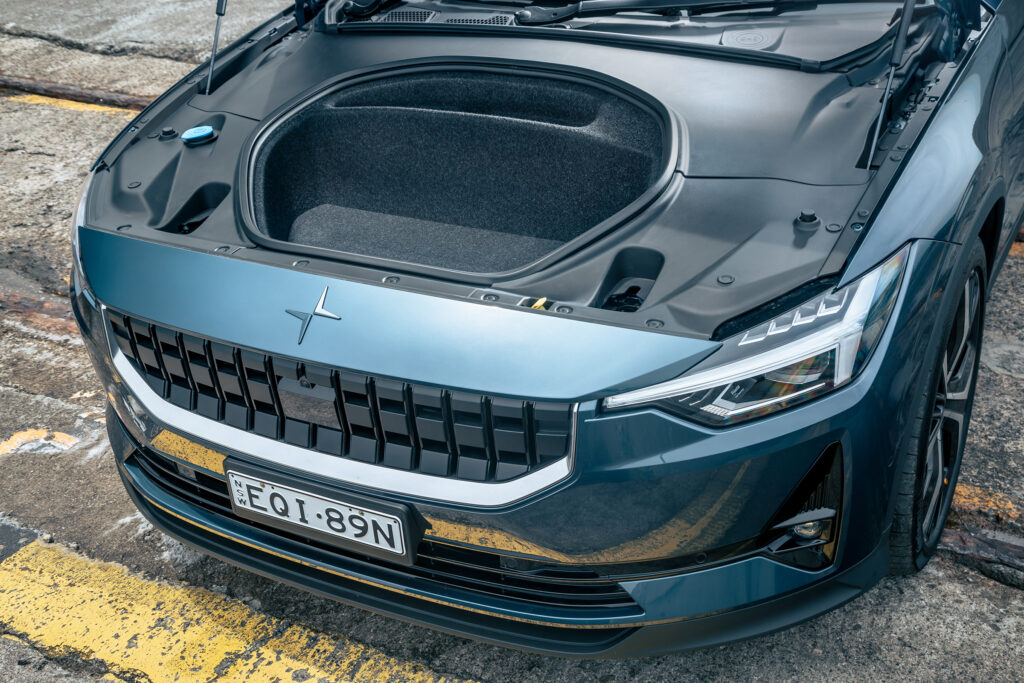
Under the bonnet there’s a modest 35-litre cavity that would be handy for charging cables or valuables. The boot is 410 litres and a lot more useful, helped by the 60/40 split-folding back seats.
Performance and efficiency
Our Polestar 2 Dual Motor comes with twin 150kW/330Nm electric motors, one driving the front wheels and one the rear.
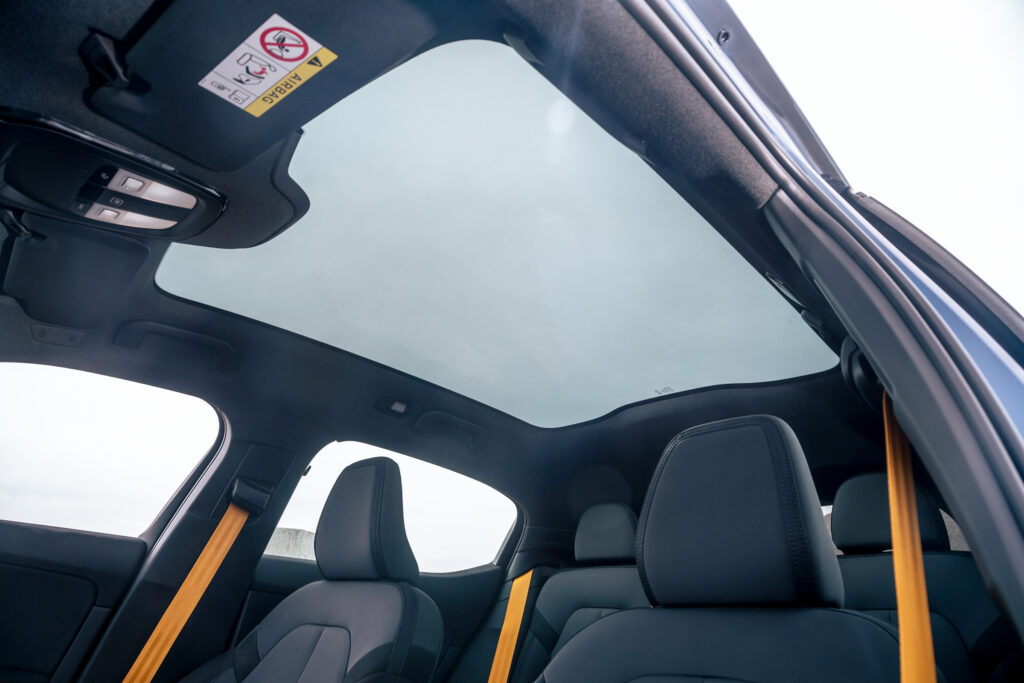
It’s a feisty combination that provides all-wheel drive and a satisfying surge when you plant the throttle on the way to 100km/h in 4.7 seconds. It’s point-and-shoot excitement that’s always on tap. You’re rarely left wanting in what is a fast and fun EV.
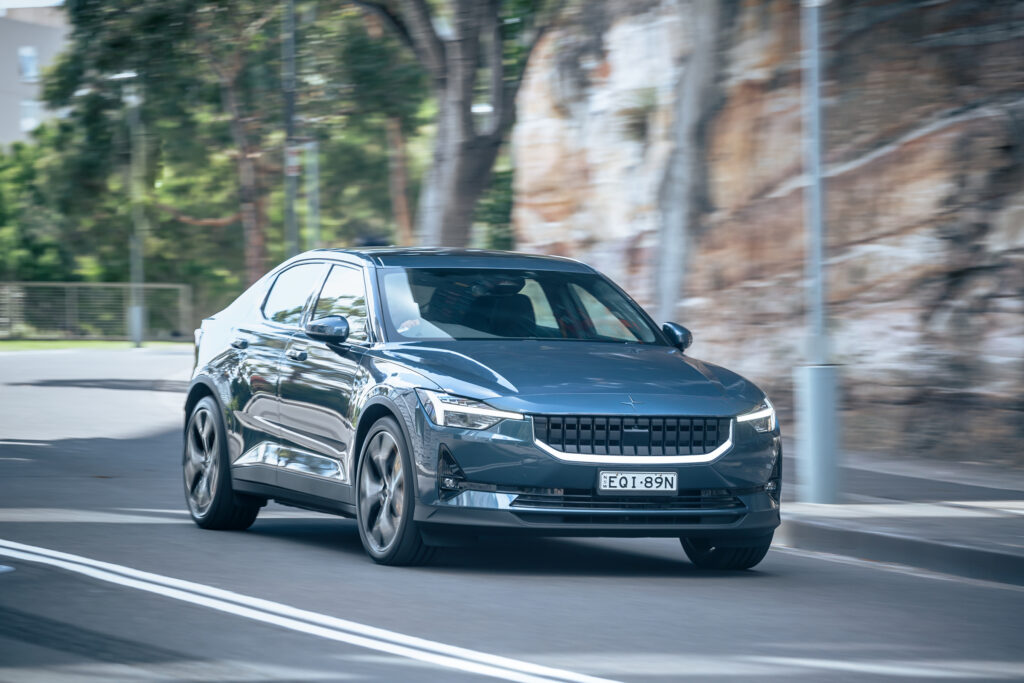
With equal grunt going to the front and rear the front wheels can occasionally scrabble for traction if you’re pushing hard, but in most scenarios it’s accomplished and adept.
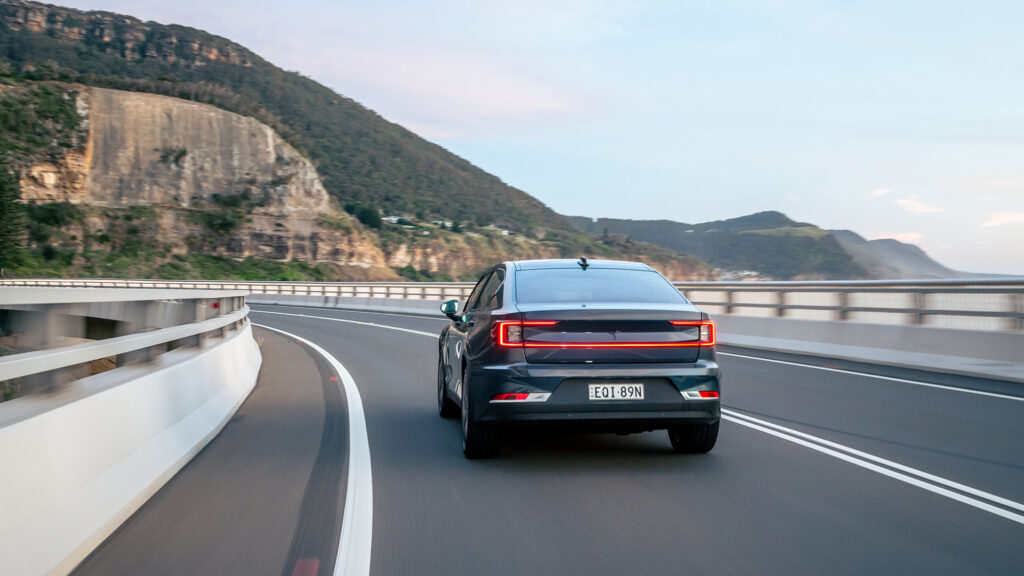
Electricity use reflects its performance, with the Dual Motor using a claimed 19.4kWh/100km. We hovered around that early in our 100km drive but edged above it after more enthusiastic driving on a country road.
The clasimed range for the Long Range Dual Motor is 480km (according to the WLTP standard) and when we first jumped in the trip computer was estimating 400km from the charge. We didn’t get to travel that far but the range estimator was dropping in line with the driving we were doing. So something around 400km should be achievable.
Charging
The Polestar 2 can take 11kW of DC charge and (as a Dual Motor) 150kW of DC charge.
While the battery capacity is claimed as 78kWh only 75kWh is usable.
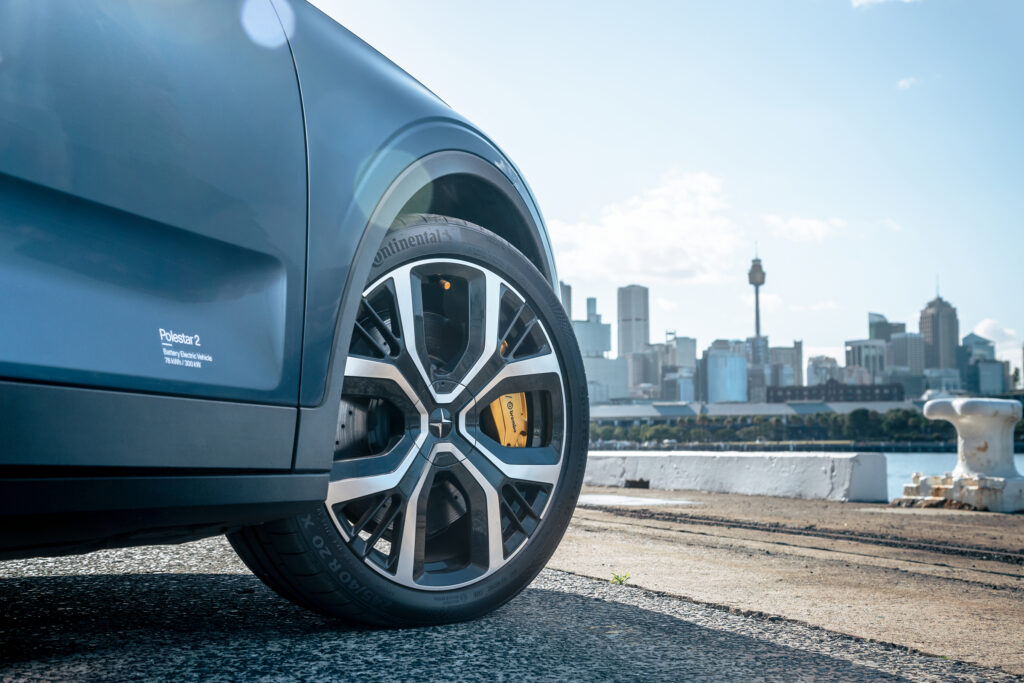
So a full charge on AC should take about eight hours using a wallbox or about 34 hours from a regular powerpoint.
DC fast charging can top up from 20 to 80 percent in as little as 40 minutes.
Ride and handling
Polestar says it is more about driving enjoyment than outright comfort.
You get that as soon as you start rolling in the Polestar 2.

The suspension is taut, possibly not helped by riding on the 20-inch wheels with lower profile tyres that come as part of the Performance Pack.
It’s never harsh, but you certainly feel the imperfections in the road surface.
But there’s a trade-off in excellent dynamic capabilities. The Polestar 2 points into a corner assertively and has an inherent confidence.
And the control in the suspension makes for terrific suburban running backed up by reassurance on the open road.
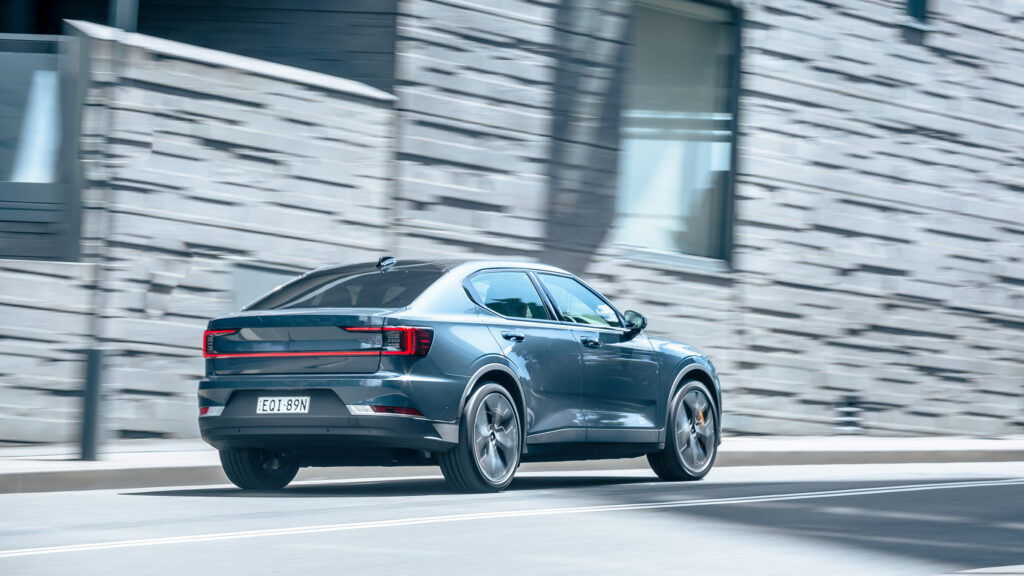
The 20-inch Continental tyres have absolutely no issue with grip, there is with noise. The tyres and/or suspension can boom over road joins and other bumps, something more noticeable at city speeds.
Talking point
The Polestar is one of the first cars with Android Automotive, which is an operating system for the entire infotainment unit rather than the smartphone connectivity system known as Android Auto.
The system is capable of over-the-air software updates and will soon incorporate Apple CarPlay to connect Apple phones.
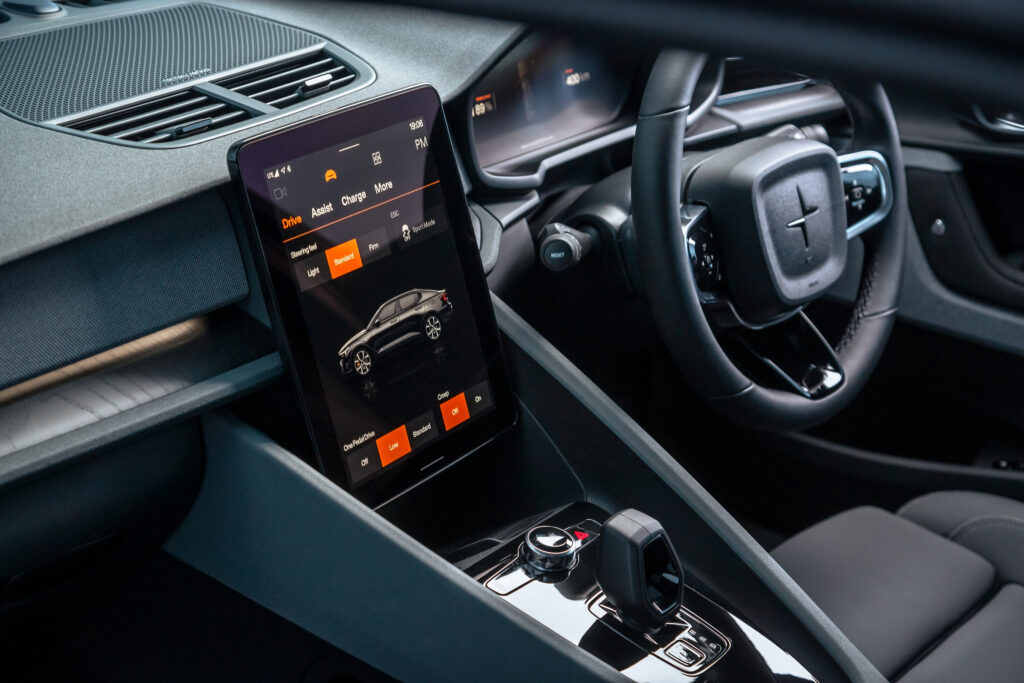
But having used it we’re not sure Apple CarPlay will be needed.
Other than some connectivity glitches that appear to be related to Android Automotive in Australia – we experienced the same thing in the Volvo XC40 – the system is intuitive and easy to use.
Safety
With Volvo as a parent it’s not surprising that safety was high on the engineering agenda.
The Polestar 2 has eight airbags and the latest active safety features such as autonomous emergency braking and speed sign recognition that could potentially save you from a fine.
There’s also a driver monitoring system to detect drowsiness and tyre pressure sensors to warn of a slow leak or puncture.
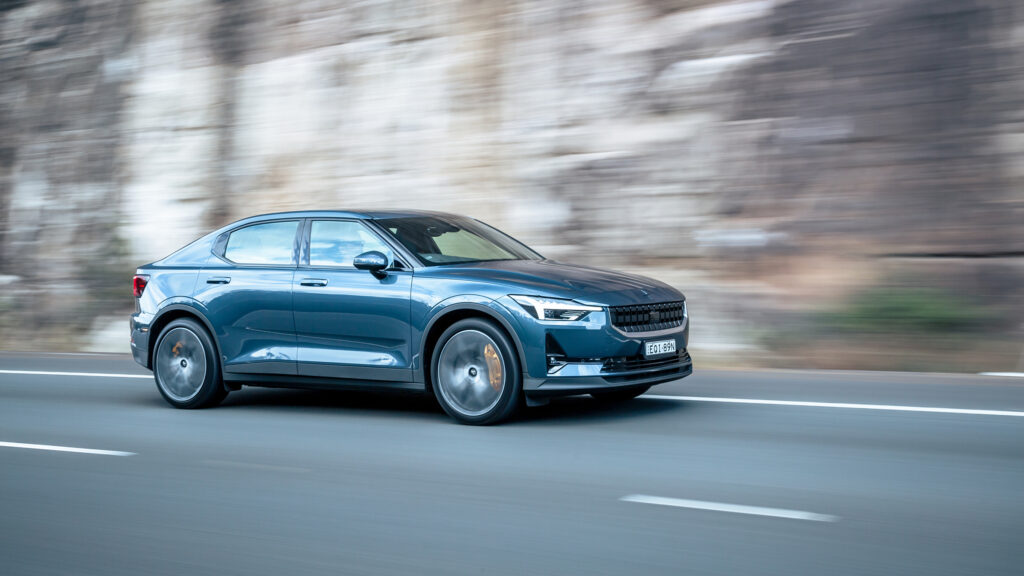
Some features are reserved for an option pack known as the Pilot Pack. It also gets blind spot warning and rear cross traffic alert with auto braking in reverse. They’re two technologies that come standard on many more affordable cars.
That Pilot Pack also includes adaptive cruise control and a 360-degree camera, the latter with very clear imagery. Plus it gets LED headlights that can be left on high beam with the car blanking out other vehicles so as not to dazzle them.
Verdict
The Polestar 2 does plenty right. It’s sharp value, terrific through corners and in Dual Motor guise has loads of punch.
It’s also elegant and classy and beautifully put together, reinforcing the attention to detail.
It’s a tentalising entrée to the future models Polestar has promised over coming years. And whereas the Polestar 2 comes with compromises due to starting with an ICE architecture, those future models will be conceived from the ground up as an EV, so should bring interior space benefits.
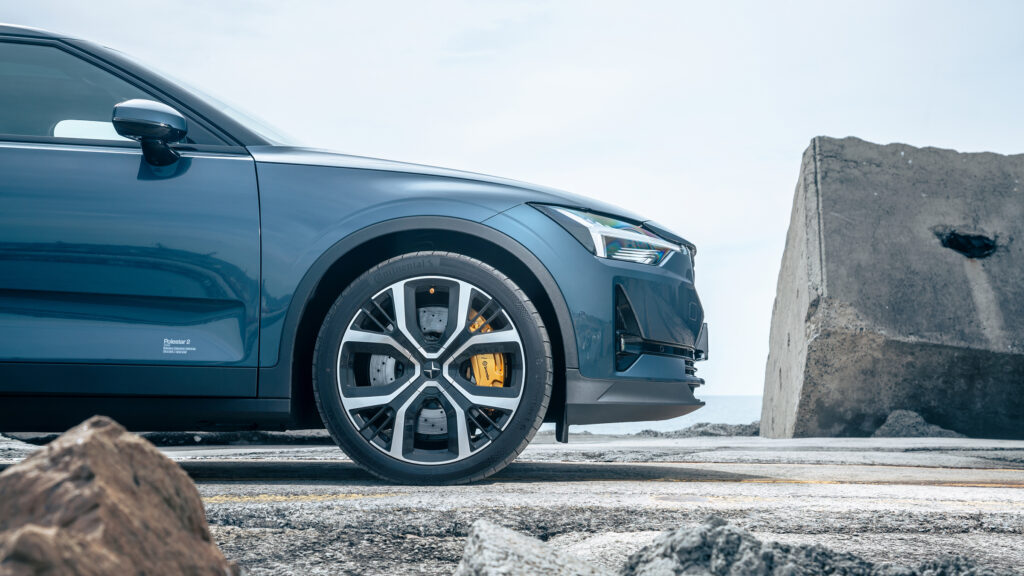
As it is, the Polestar 2 is arguably the most serious challenge yet to the Tesla Model 3 and adds depth to the expanding EV market.
2022 Polestar 2 Long Range Dual Motor specifications
Price: $69,900 plus on-road costs
Basics: EV, 5 seats, 4 doors, compact liftback sedan, AWD
Range: 480km (WLTP)
Battery capacity: 75kWh
Battery warranty: 8 years/160,000km (guarantee of 70 percent of original battery capacity)
Energy consumption: 19.4kWh/100km
Motors: 1 front 150kW/330Nm and 1 rear 150kW/330Nm, 300kW/660Nm combined
AC charging: 11kW, Type 2 plug
DC charging: 150kW, CCS Combo plug
0-100km/h: 4.7 seconds (claimed)

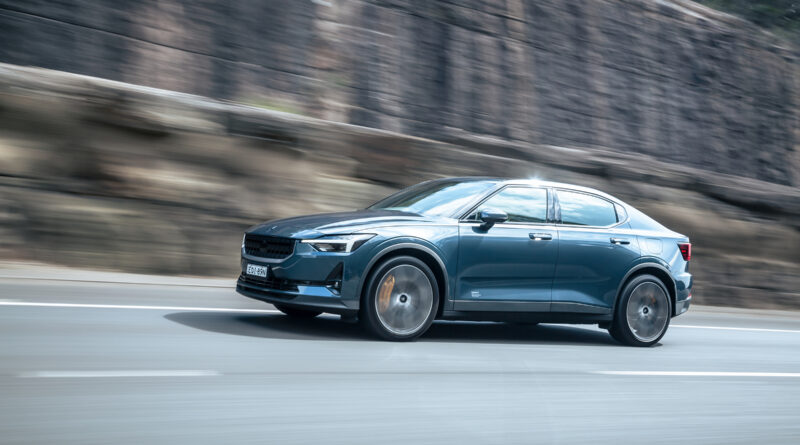
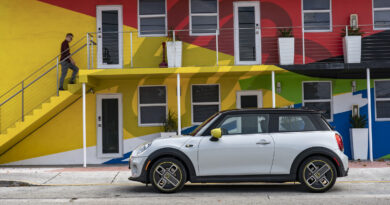
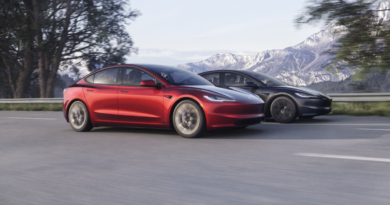
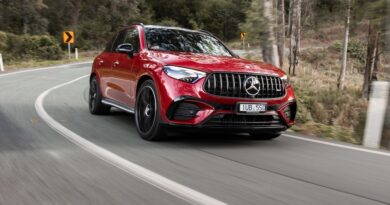
For rural people looking for that dual motor AWD capability, ground clearance is an important consideration. What is the ground clearance of the Polestar 2?
The regular Polestar 2 models gets 151mm of ground clearance and if you fit the Performance Pack on the Dual Motor version it lowers the suspension by 5mm, so 146mm of clearance. Obviously that’s not enough for most off-road work. Unfortunately there aren’t any EVs on sale yet designed for proper off-roading. But they are coming!